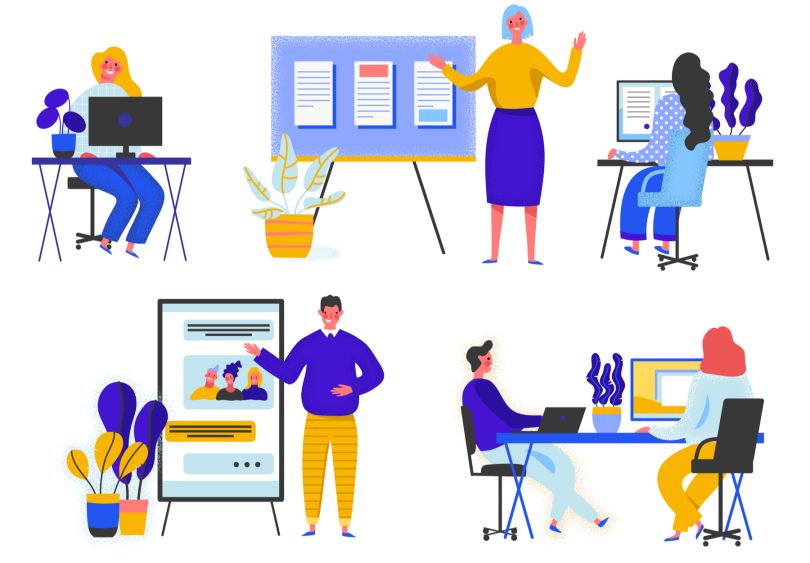When Google made its initial public offering in 2004, founders Larry Page and Sergey Brin wrote in their IPO letter that employees are encouraged “to spend 20 percent of their time working on what they think will most benefit Google,” in order to help the company be “more creative and innovative.”
They were referring to the company’s unusual embrace of side projects on company time, which during Google’s early days had launched some of its most important products, including Gmail, AdSense and Google News.
What is the 20 Percent Project?
In the years since, other tech companies have developed their own ways of giving employees time to pursue side projects. Atlassian adopted a “20 percent time” policy in 2008, and LinkedIn launched its InCubator program in 2012, where developers pitch projects that, if approved, they can spend up to three months working on full time.
But employees sometimes struggle to take advantage of these perks. A 2013 article in Quartz about Google’s 20 percent program prompted discussions among Google employees over the difficulties of balancing work with side projects. Developers were often able to work on side projects only by putting in extra time in addition to their full-time job responsibilities, leading some to call it “120 percent time.”
Some employees didn’t seem to mind — the very qualities that motivated them to work at Google and pursue side projects in the first place meant that they were likely to tinker on projects outside of working hours anyway.
“Certainly I, and many other Googlers, are simply super motivated and willing to use our free time to work on projects that use our infrastructure because we’re intrinsically interested in using these things to make new products,” one employee wrote.
But letting work encroach on employees’ 20 percent time defeats the purpose of having a policy, and may disadvantage developers with responsibilities outside of work.
Atlassian observed similar issues with its program early on. Employees reported in a company survey that it was difficult to carve out time to work on side projects unrelated to their existing job responsibilities. The survey found that developers on small teams were especially reluctant to take advantage of 20 percent time.
“It was often due to developers not wanting to increase the workload on their peers while they did 20 percent work,” the company wrote in its blog. “They don’t want to be seen as enjoying a privilege while others carry the workload.”
Atlassian noted that the company’s schedule of “frequent product releases” contributes to the difficulty of scheduling 20 percent time, because it results in very little “down time” for developers.
Over the years, many companies have implemented similar programs, with varying levels of success. The idea has also expanded to education, with teachers adapting their curriculum to include 20 percent time, also known as Genius Hour. Classrooms participating in Genius Hour set aside a portion of class time for students to pursue their individual interests, and may avoid using grading to evaluate progress.
For companies that struggle with these programs over time, it’s helpful to see how a successful program is able to be sustainable long term.

Making Side Projects Work in the Long Run
Myplanet, a 150-person company that creates custom websites for clients and specializes in “complex, multi-interface” products, according to CEO Jason Cottrell, has made dedicated time for side projects — known at Myplanet as “Awesome Time” — a company-wide benefit for the past 10 years.
Recently, the company published an open-source tool that facilitates Q&As for remote work meetings, called Askaway. Myplanet developers wrote it during Awesome Time several years back, and the company had been using it internally ever since. The tool allows meeting hosts to customize Q&As for each meeting, giving hosts control over whether to allow anonymous questions, enabling typed and spoken questions to be queued together, and using upvotes to determine priority.
“We learn in very unique and often unexpected ways.”
What’s unusual about Myplanet’s program is that, although there have been adjustments over the years, it’s still going as strong as ever. Employees have worked on projects that train self-driving vehicles to compete in the AWS DeepRacer, help refugees acclimate to life in Canada and add to the experience of Awesome Time itself — one group created a portal for helping employees find collaborators with other skill sets.
The program also isn’t just for developers, but for all employees at the company. It helps that employees can pursue a wide range of interests because “sometimes people didn’t enjoy it when it was just all about innovation,” Cottrell said.
Projects can range from personal and professional improvement to learning new technologies and doing work for registered charities. One year, a team created a company podcast station, which turned out to be a big hit, and recently celebrated 200 episodes.
“We learn in very unique and often unexpected ways,” Cottrell said.

Side Projects Should Get Employees Excited
While projects developed in Awesome Time sometimes benefit the company directly by being incorporated into work projects, that isn’t the point of the program.
“Sometimes it just needs to be novel for a person or a group of individuals in the company — you get your benefit there too because all [individuals at] the company have to advance,” he said.
That being said, the company has experienced side projects coming in handy for work. A few years back, when Myplanet was weighing the benefits of React Native against other mobile development frameworks, it was able to leverage the experience of a team that built a mindful meetings app during Awesome Time. The team used React Native for its app and had firsthand experience of its strengths and weaknesses.
“Sometimes it just needs to be novel for a person or a group of individuals in the company.”
While many companies have trouble sustaining their 20 percent time programs, hackathons are also used to foster innovation and enjoy widespread adoption among companies. Myplanet has hosted hackathons before, and “there’s room for many of these,” Cottrell said, but he thinks that programs like Awesome Time tap into types of creativity that aren’t reached by hackathons, which uses the pressure cooker method of innovation by putting individuals under a tight time restraint — usually a day or two of continuous hacking.
“I’m not as huge on hackathons only, as a method, because I think it only starts to address certain types of bottom-up evolution,” Cottrell said. “You’ll get one person for whom it’s incredibly easy to sit down, think of this really crazy, out-there idea ... they can ideate and hack. You get other people who think that’s actually really stressful — they don’t really enjoy the generative side, they want to be training and consuming new ideas and theories. So the flexibility that we give in the program was one of the really powerful adaptations to different personality types — and, more importantly, different ways that people contribute to how a company evolves and grows.”

Making the Program Sustainable
At Myplanet, Awesome Time takes up 5 percent of working time — substantially less than what Google originally proposed for its employees. Cottrell said that allocating less time makes the program more sustainable in the long term.
“Twenty percent time is a lot,” he said. “If you’re going that high, you really need to have a really strong way of tracking and seeing value. I think it’s probably too high for many companies, and it’s part of why you see many of those programs get clawed back over time.”
Myplanet’s way of proving value is, somewhat surprisingly, by allocating even more time for teams with promising projects to work on them through a grants program.
“We use the grants program as a way to pull a certain number of good ideas out and then build on them each year, so they form into many products that make us more efficient in our work, that allow us to deliver a new benefit or a new capability to a customer,” Cottrell said. “In issuing those grants, it’s our way of saying, ‘Yes, we got the return on investment on the program at large.’”
The nature of Myplanet’s business provides it with an advantage when it comes to running a 5 percent program. The company creates websites for clients, so there are natural periods of downtime between projects when employees can work on side projects.
But the company works hard to protect employees’ access to the benefit as well. To prevent work responsibilities from crowding out employees’ Awesome Time, participation in the program is tracked just like paid time off.
“We’ve always had a very firm belief that innovation isn’t just a top down, C-suite-led item.”
“[Employees] schedule it in just like vacation,” Cottrell said. “We plan it in as part of their project schedule, no different than we would a vacation day. From time to time, something comes up — like a deadline changes or something else — and we have to reschedule it. And I think that’s something that most people can be understanding about.”
Employees get a balance of hours in that bucket every year, and the company uses tracking to encourage employees to use up their Awesome Time by the end of the year.
When the program first kicked off 10 years ago, there were many practical concerns. As a professional services organization, the bottom line is always linked to billable hours, so finding a way for a time-intensive program like Awesome Time to co-exist was a tricky proposition. But the company knew it was in an industry that required constant upgrades and reinventions.
“A focus for us early on was: ‘How do we make sure that we don’t go stale? How do we make sure our team doesn’t go stale?” Cottrell said. “We’ve always had a very firm belief that innovation isn’t just a top down, C-suite-led item. It’s something [where] you’ve got your whole team looking at new ideas — how do we find a way to cultivate those?”




